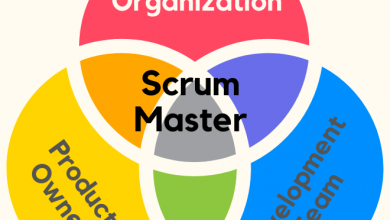Employee Monitoring Software: Enhancing Productivity and Compliance

Employee Monitoring Software has become an integral part of modern businesses, revolutionizing the way organizations manage their workforce. From tracking employee activities to ensuring compliance with regulations, this software offers a plethora of features aimed at optimizing productivity and enhancing security. In this article, we will delve into the key aspects of Employee Monitoring Software, its benefits, compliance considerations, use cases, selection criteria, implementation best practices, and future trends.
Key Features
Employee Monitoring Software comes equipped with essential features designed to streamline management processes and empower decision-making. These features include:
- Time Tracking: Monitor employee working hours and attendance, facilitating efficient resource allocation and project management.
- Screen Monitoring: Keep track of employee screen activities to identify productivity bottlenecks and address any potential security risks.
- Activity Logging: Record employee actions on company devices, providing insights into workflow patterns and areas for improvement.
- Reporting: Generate detailed reports on employee performance metrics, enabling managers to make data-driven decisions and optimize operations.
Benefits
The adoption of Employee Monitoring Software yields numerous benefits for both employers and employees alike.
For employers, it leads to:
- Increased Productivity: By tracking employee activities and identifying inefficiencies, businesses can implement strategies to enhance productivity and streamline workflows.
- Reduced Operational Costs: Optimized resource allocation and improved time management result in cost savings for the organization.
- Improved Remote Work Management: With the rise of remote work, Employee Monitoring Software enables employers to effectively manage remote teams and ensure accountability.
Employees also benefit from:
- Clear Expectations: Transparent monitoring fosters a culture of accountability and encourages employees to stay focused on their tasks.
- Fair Evaluation: Objective performance metrics provide employees with a clear understanding of their contributions and areas for growth.
- Work-Life Balance: By optimizing workflows and reducing unnecessary tasks, employees can achieve a better work-life balance, leading to higher job satisfaction.
Compliance and Privacy
While Employee Monitoring Software offers significant advantages, concerns regarding privacy and compliance with data protection laws must be addressed.
To ensure ethical and legal usage, organizations should:
- Respect Employee Privacy: Implement monitoring practices that respect employee privacy rights and adhere to applicable regulations.
- Comply with Data Protection Laws: Ensure that the collection, storage, and usage of employee data comply with relevant data protection laws, such as GDPR or CCPA.
Use Cases
Employee Monitoring Software finds application across various industries and business scenarios.
Examples include:
- Remote Work Management: Facilitating communication and collaboration among remote teams while ensuring productivity and accountability.
- Project Tracking: Monitoring project progress and identifying potential roadblocks to ensure timely delivery and resource optimization.
- Time Optimization: Analyzing employee time usage to identify areas of inefficiency and implement strategies for time optimization.
Choosing the Right Software
Selecting the most suitable Employee Monitoring Software requires careful consideration of various factors.
When evaluating options, businesses should consider:
- Scalability: Ensure that the software can accommodate the organization’s growth and evolving needs.
- Integrations: Look for software that seamlessly integrates with existing systems and tools to maximize efficiency.
- User-Friendliness: Prioritize user-friendly interfaces and intuitive features to facilitate adoption and minimize training requirements.
Implementation
Successful implementation of Employee Monitoring Software hinges on effective planning and communication.
Best practices include:
- Clear Communication: Communicate transparently with employees about the purpose and scope of monitoring, addressing any concerns or misconceptions.
- Training and Support: Provide comprehensive training and ongoing support to ensure that employees understand how to use the software effectively.
Download data loss prevention software
Refers to the action of acquiring software designed to safeguard sensitive information and prevent its unauthorized access, leakage, or theft. This type of software typically includes features such as encryption, access controls, and monitoring capabilities to detect and mitigate potential data breaches. By download data loss prevention software software, users can enhance the security of their digital assets, protect confidential data from falling into the wrong hands, and ensure compliance with data protection regulations.
Trends and Future Outlook
The landscape of Employee Monitoring Software is constantly evolving to meet the changing needs of the workforce.
Current trends and future developments include:
- Integration with AI and Machine Learning: Leveraging advanced technologies to analyze employee behavior and provide actionable insights for optimization.
- Focus on Employee Well-being: Incorporating features aimed at promoting work-life balance and reducing burnout among employees.
- Adaptation to Hybrid Work Environments: Developing solutions tailored to the needs of hybrid work models, blending remote and in-office work seamlessly.
In conclusion, Employee Monitoring Software plays a crucial role in enhancing productivity, ensuring compliance, and fostering a transparent work culture. By leveraging its key features and benefits, businesses can optimize their operations and adapt to the evolving demands of the modern workplace.
FAQs
- Is Employee Monitoring Software legal?
- Yes, as long as it is used ethically and complies with relevant data protection laws.
- Can Employee Monitoring Software improve remote team management?
- Absolutely, it provides insights into remote team activities and facilitates communication and collaboration.
- How does Employee Monitoring Software benefit employees?
- It promotes transparency, fair evaluation, and better work-life balance.
- What factors should businesses consider when choosing Employee Monitoring Software?
- Factors like scalability, integrations, and user-friendliness are crucial for making the right choice.
- What are some emerging trends in Employee Monitoring Software?
- Trends include integration with AI, focus on employee well-being, and adaptation to hybrid work environments.


